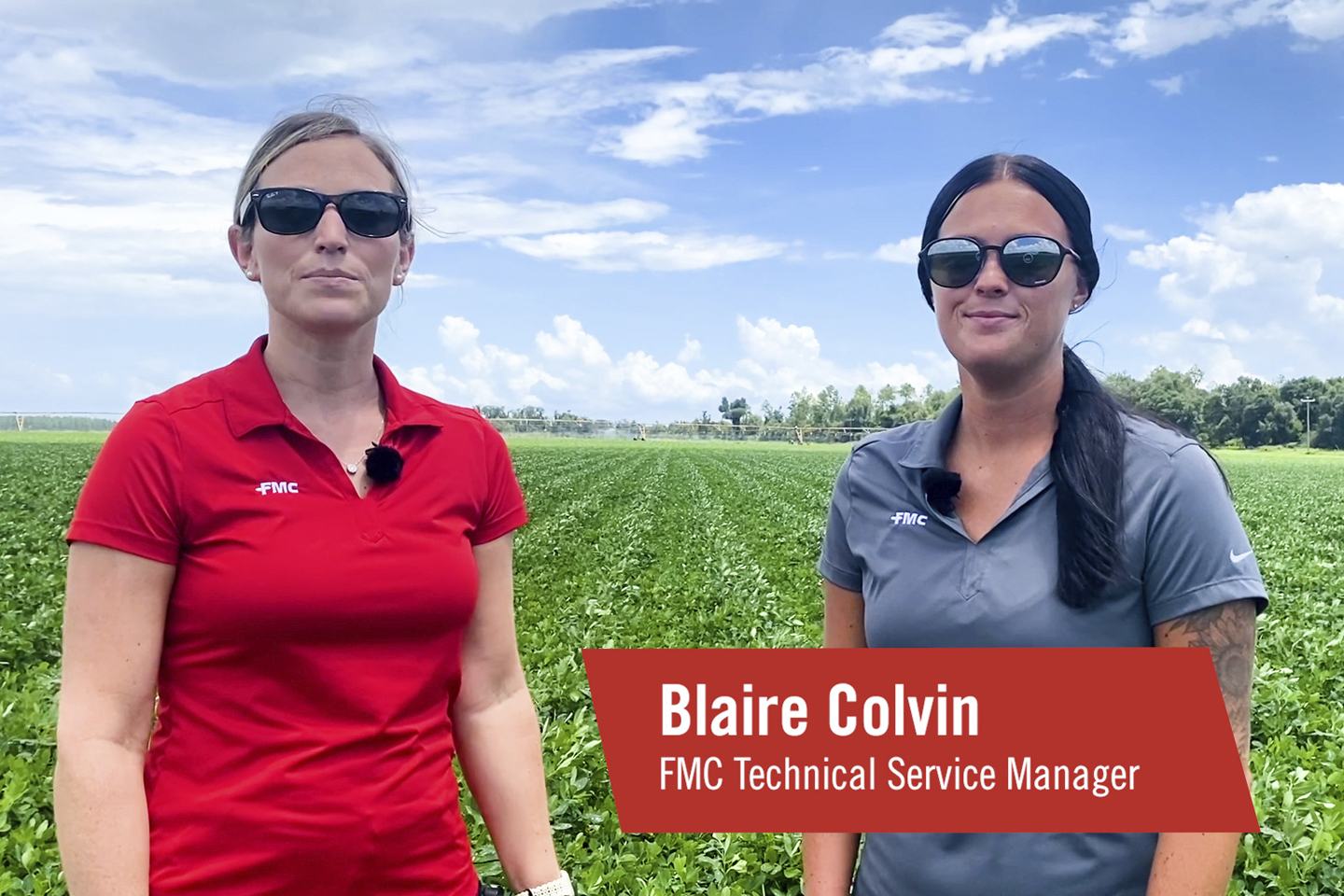Read the entire report from
our technical services team
Historically, there have been 4 main pests in the Lepidopteran family that we monitor closely in corn in the Great Plains. These four insects have similarities that make identification difficult but their differences in biology can drastically influence the severity of their infestation and the time where application is required. In recent years, many of these insects have developed resistance to Bt traits in field corn but fortunately a newer class of insecticide has proven to have ovi-larvicidal control on all four.
Lepidopteran Scouting Tips for 2020 Corn
Western Bean Cutworm (Striacosta albicosta)
- Flight has started already so it is critical to start scouting right away.
- Peak flight is likely taking place in the next week for most of Nebraska.
- Look for clusters of 5-200 eggs on the top surface of the upper leaves.
- Spray 14-20 fl. oz. Prevathon® insect control if 4% of the corn plants have egg masses or larvae.
-
Eggs hatch 5 days after being laid. Residual insecticides are more effective the closer to hatch they are applied.
European Corn Borer (Ostrinia nubilalis)
- 1st generation are already here. Examine 25 whorls. Consider applying Hero® insecticide if significant live larvae or damage is observed.
- 2nd generation can be expected in 3-5 weeks. Look for eggs on the underside of leaves in the middle 3rd of the corn plant and treat if 25% of the plants have eggs.
-
Apply Prevathon insect control 14-20 fl. oz./A if warranted. Financial sheets are available on most University websites and can assist with the ROI.
Corn Earmworm (Ostrinia nubilalis)
- Moth flight is currently underway.
- 1st generation larvae can be expected in 3 weeks but will likely only cause slight defoliation in corn.
- To control 2nd generation larvae which feed on grain, begin scouting as soon as silking begins.
-
If 10% of plants have eggs on silks consider applying Prevathon insect control at 14-20 fl. oz./A for residual control.
Fall armyworm (Spodoptera frugiperda)
- Larval feeding has already been documented in pastures and oats this year and can be expected to move to late planted corn in the next 2-3 weeks.
- Fall armyworm generally feed during the day and in patches so be sure to grid scout the field.
-
If 75% of the plants show leaf feeding and are less than 1.25 inches, apply Prevathon insect control at 14-20 fl. oz./A for residual control.
It's important to note that while insect population dynamics are fluid and complicated, the greatest limiting factor must be addressed in order to optimize crop protection. Insecticide application should commence as soon as possible when the first of these species hits threshold. Waiting as little as one week to treat after noticing eggs or larvae could result in poor control.
How do I maximize the value of that fungicide or insecticide trip across the field at tassel?
Answer: Just like Western Bean Cutworm control requires a long-residual product like Prevathon insect control, corn diseases can set in quickly in July and August but one can never know exactly when. Lucento® fungicide provides the residual disease control needed when making a timed insecticide application.
| Prevathon Insect Control | Lucento Fungicide |
|---|---|
| 14-20 fl. oz./A | 5 fl. oz./A |
| 14+ days of control of leps | 50 days of control |
| Rainfast in 2 hours | Rainfast in 2 hours |
| Controls pyrethroid-resistant insects | Controls strobilurin-resistant diseases |
| Won't flare mites | Dual MOA |
| No signal word = toxicity | Most systemic triazole commerically available |
| Ground/Air/Chemigation | Ground/Air/Chemigation |

VIEW 2019 ON-FARM GROWER YIELD TRIALS WITH LUCENTO FUNGICIDE
The heat and relative dryness have aggressively spawned several calls on insect pests in soybeans. While it may be too late to do anything about those impacted by the new Soybean Gall Midge, weekly scouting should commence for other troublesome pests.
Insect Scouting Tips for 2020 Soybeans
Bean Leaf Beetle (Cerotoma trifurcate)
- BLB pressure has been lighter than it was in 2019 so far as overwintering adults are concerned, but two more generations are common in Nebraska and significant defoliation can occur.
- Look for first generation beetles actively chewing on foliage or eggs at the base of plants in the next two weeks.
-
While defoliation below 40% rarely impacts yield, chemical control may be merited in order to prevent these insects from vectoring diseases like bean pod mottle virus.
Japanese Beetle (Popillia japonica)
JAPANESE BEETLE ALERT
- Heavy infestation observed in Northwest Missouri last week of June.
- Singe generation clusters can form as beetles are attracted to volatile chemicals produced by damaged plants.
-
Consider control if defoliation reaches 20% while beetles are still present.
Thistle Caterpillar/Painted Lady (Popillia japonica)
- A typical 2-generation insect that doesn’t overwinter in Nebraska, Thistle caterpillars had 3 generations in 2019.
- Females will lay eggs singly on soybean leaves and thistles which will then hatch in one week.
- In the Great Plains and Western Corn Belt, most of the eggs have hatched and scouting should initiate immediately.
-
Soybeans between V3-V5 are most vulnerable to feeding but treatments should be considered at any stage if defoliation reaches 20%.
Dectes Stem Borer (Dectes texanus)
- Overwintering in NE and KS, beetles lay eggs on leaf petioles between June and August.
- Once tunneled, larvae can destroy soybean stalk integrity and lead to severe lodging.
- Apply Hero insecticide 5 fl. oz./A + NIS if any adults are caught in ten sweeps.
- If egg lay is already in process apply Prevathon® insect control 20 fl. oz./A for systemic control of larvae.
-
Control host weeds like sunflower and ragweed for future population management.
Elevest™ Insect Control
New from FMC is a soybean insecticide with unparalleled spectrum, residual and efficacy.
- 2 MOA (Rynaxypyr® active [28] + Bifenthrin [3A])
- Knockdown and longest residual in soybean insecticide market
- Excellent control of leps, stink bugs, aphids, loopers, and many others
- PHI: 18 days
- REI: 12 hours
- 5.0 – 9.6 fl. oz./A
Always check label for application requirements and restrictions.

Elevest™ insect control has high translaminar movement and efficacy. Applications were made to the top of soybean leaves and, once dried, soybean looper larvae were caged to the underside of the leaf.
How do I maximize the value of that insecticide trip across the field at R3?
Answer: Timing is critical for successful insect management. As we make those applications based on local agronomic thresholds, its beneficial that we can make fungicide applications at the same time that will provide reliable residual control for weeks to come.
| Hero® Insecticide | Lucento Fungicide |
|---|---|
| 5 fl. oz./A | 5 fl. oz./A |
| Contact and residual control of stink bugs and beetles | 50 days of control |
| Miticidal activity | Rainfast in 2 hours |
| Ground/Air/Chemigation | Controls strobilurin-resistant diseases |
| Dual MOA | |
| Most systemic triazole commerically available | |
| Ground/Air/Chemigation |
With insect and disease control, coverage is essential. Greater carrier volumes result in better residual control.
VIEW 2019 ON-FARM GROWER YIELD TRIALS WITH LUCENTO FUNGICIDE
Hero insecticide and Elevest insect control are Restricted Use Pesticides. Always read and follow all label directions, precautions and restrictions for use. Some products may not be registered for sale or use in all states. Elevest insect control may not be registered for sale or use in all states. Contact your local FMC representative or retailer for details and availability in your state. FMC, the FMC logo, Elevest, Lucento, Hero, Rynaxypyr and Prevathon are trademarks and HatchTrak is a service mark of FMC Corporation or an affiliate. Trivapro, Quadris Top, and Miravis are trademarks of Syngenta Group Company. Headline AMP, Priaxor, Revytek and Veltyma are trademarks of BASF. Delaro, Luna, and Stratego are trademarks of Bayer CropScience. Aproach is a trademark of DuPont, Dow AgroSciences or Pioneer and their affiliated companies or their respective owners. ©2020 FMC Corporation. All rights reserved. 20-FMC-2843



